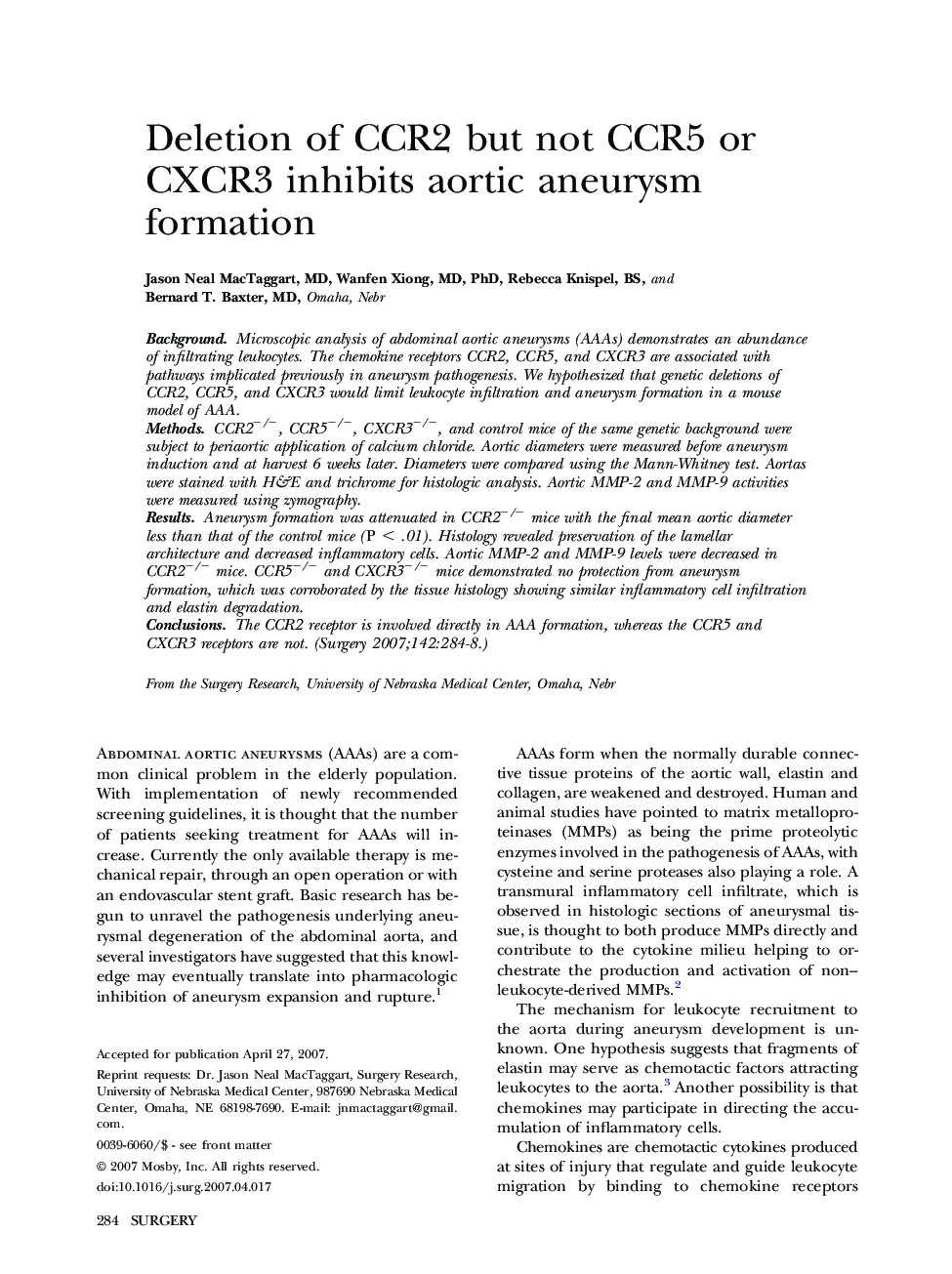| Article ID | Journal | Published Year | Pages | File Type |
|---|---|---|---|---|
| 4310342 | Surgery | 2007 | 5 Pages |
BackgroundMicroscopic analysis of abdominal aortic aneurysms (AAAs) demonstrates an abundance of infiltrating leukocytes. The chemokine receptors CCR2, CCR5, and CXCR3 are associated with pathways implicated previously in aneurysm pathogenesis. We hypothesized that genetic deletions of CCR2, CCR5, and CXCR3 would limit leukocyte infiltration and aneurysm formation in a mouse model of AAA.MethodsCCR2−/−, CCR5−/−, CXCR3−/−, and control mice of the same genetic background were subject to periaortic application of calcium chloride. Aortic diameters were measured before aneurysm induction and at harvest 6 weeks later. Diameters were compared using the Mann-Whitney test. Aortas were stained with H&E and trichrome for histologic analysis. Aortic MMP-2 and MMP-9 activities were measured using zymography.ResultsAneurysm formation was attenuated in CCR2−/− mice with the final mean aortic diameter less than that of the control mice (P < .01). Histology revealed preservation of the lamellar architecture and decreased inflammatory cells. Aortic MMP-2 and MMP-9 levels were decreased in CCR2−/− mice. CCR5−/− and CXCR3−/− mice demonstrated no protection from aneurysm formation, which was corroborated by the tissue histology showing similar inflammatory cell infiltration and elastin degradation.ConclusionsThe CCR2 receptor is involved directly in AAA formation, whereas the CCR5 and CXCR3 receptors are not.
